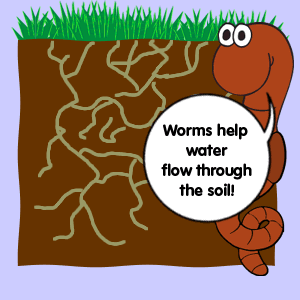The 2-Minute Rule for North Carolina Worms
The 2-Minute Rule for North Carolina Worms
Blog Article
An Unbiased View of North Carolina Worms
Table of ContentsAbout North Carolina WormsSome Known Questions About North Carolina Worms.All about North Carolina WormsLittle Known Facts About North Carolina Worms.
Example: 1-gallon of worm spreadings to 4 gallons of potting mix. Do NOT use a potting mix that has chemical plant foods in it. Review the labelit will state. 1/2 mug in the bottom of the growing opening for smaller plants. 1 mug for bigger plants. ie. tomatoes, eco-friendly peppers, summer season squash, and the like.
The addition of tea can additionally include enhanced microbial biomass to your soil. You can always side-dress your plants with worm spreadings at any type of time. Just bear in mind, the bacteria will certainly die if exposed to UV rays (Sunlight), so make sure to cover the spreadings with an inch or so of dirt.
This frustrated them for years until the screening techniques became much better. It would get far better(with more castings), degree off, and after that decline. Too numerous worm castings would certainly speed up the development to a pace that the plant could not recover from.
Some Known Details About North Carolina Worms
Several herbicides deal with this exact same concept. 20% by quantity seems to be the "Sweet Place". I have clarified the virtues of worm spreadings for about 2000 words. What regarding the opposite of the coin? Nothing is ideal. Worm spreadings are no different. It takes some time to produce quality worm spreadings.
You can purchase them which leads to second. Worm castings certainly cost greater than chemical fertilizers. Nonetheless, worm castings get on the more affordable end of organic fertilizers. You will need to determine what is more vital. It is very easy to create little amounts of worm spreadings. (50 gallons annually) It is a much tougher and extremely expensive financial investment to generate big amounts of worm spreadings (North Carolina Worms).

Producing a healthy soil might be the best benefit of worm spreadings. We talked about worm spreadings NPK and likewise the proper nutrient evaluation that need to use to worm spreadings.
Some Known Incorrect Statements About North Carolina Worms
We spoke regarding some of the disadvantages associated with worm spreadings. I covered a lot of material in this short article.
The upright burrows are typically open, although the worms cap the leading with deposit and waste matter. Roots need oxygen for their growth, whereas they produce carbon dioxide that requires to leave the dirt.
Earthworms increase porosity by two mechanisms: (1) by developing irreversible burrows, and (2) by boosting dirt aggregation. Gathering is improved by the blending of soil and organic issue in the earthworms' intestines. Where to buy worms in NC. These very stable accumulations are transferred by some earthworms in their burrows, and by others at the surface area of the dirt


In one more research study, earthworms were estimated to consume 4 to 10 percent of the top 6 inches of the soil yearly. Soil compaction minimizes the porosity of the dirt.
Unknown Facts About North Carolina Worms
Typical earthworm populaces can quickly take in 2 lots of dry issue per acre annually, partly digesting and blending it with soil. The value of earthworms to mix surface area deposit with soil becomes really clear in soils that do not have any earthworms. Many of our Pennsylvania soils have at the very least some earthworms, and the effect of their full lack, therefore, can not be kept in mind.
(https://www.surfyourtown.com/united-states/lenoir/general/north-carolina-worms)In these dirts, the formation of topsoil with practical natural issue web content did not happen, resulting in poor crop growth. Once the reason was developed, the federal government of the Netherlands started a project to present earthworms. After the intro of the earthworms, a dark topsoil layer was formed, and plant growth increased significantly.
They live largely from partly decomposed raw material that is already included in the soil. They consume their means via the dirt, creating straight burrows that they full of their waste matter. These types ingest large quantities of dirt that they mix with digested plant deposit in their digestive tracts. or anecic types reside in long-term vertical burrows that can be 5 or 6 feet deep.
Their burrows stay open, although they top the top with plant deposit that they draw to the entryway. These species consume significant quantities of dirt that they blend with absorbed residue in their guts. Their excrement is mainly deposited at the surface area of the dirt. The nightcrawler Lumbricus terrestris is one of the most popular participant of this team.
Report this page